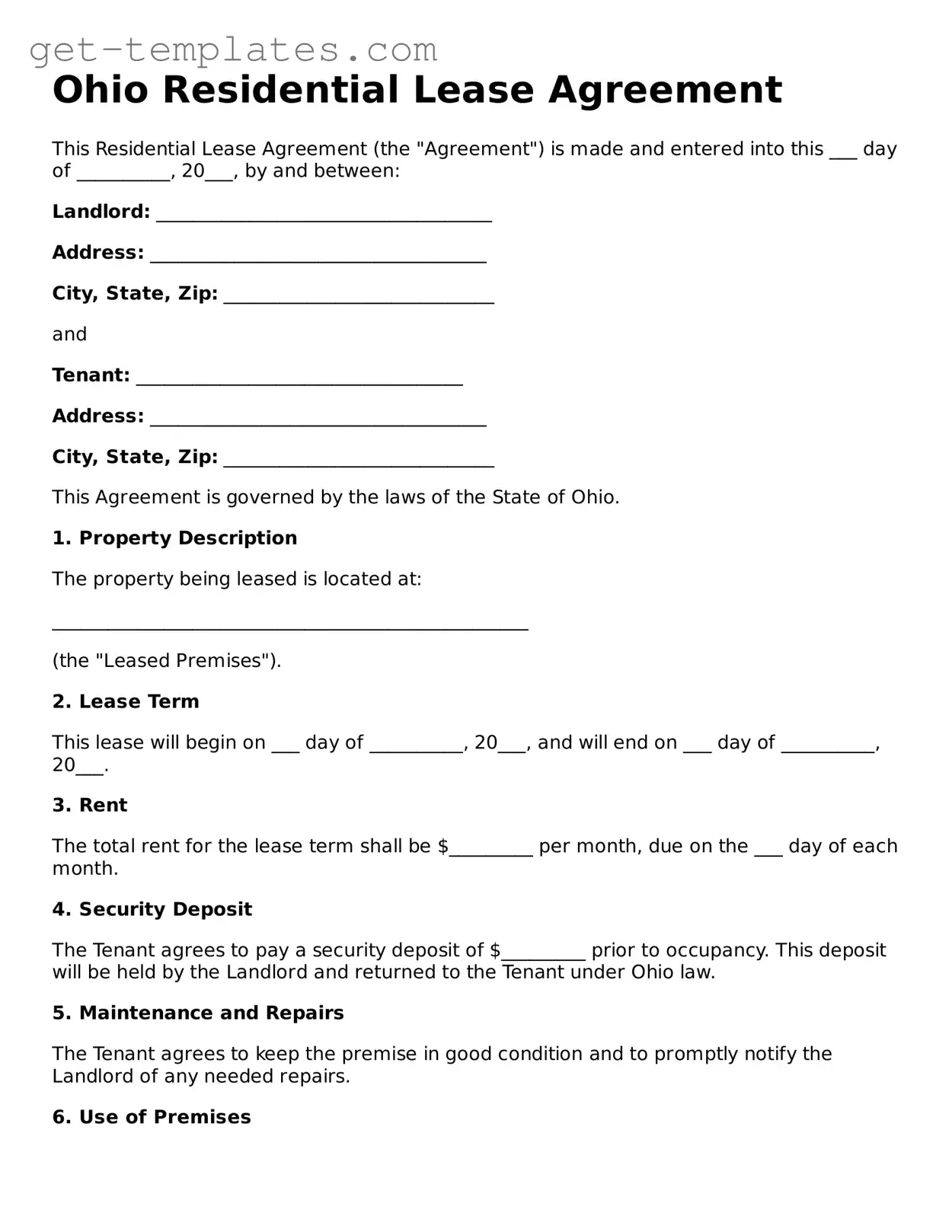Ohio Residential Lease Agreement
This Residential Lease Agreement (the "Agreement") is made and entered into this ___ day of __________, 20___, by and between:
Landlord: ____________________________________
Address: ____________________________________
City, State, Zip: _____________________________
and
Tenant: ___________________________________
Address: ____________________________________
City, State, Zip: _____________________________
This Agreement is governed by the laws of the State of Ohio.
1. Property Description
The property being leased is located at:
___________________________________________________
(the "Leased Premises").
2. Lease Term
This lease will begin on ___ day of __________, 20___, and will end on ___ day of __________, 20___.
3. Rent
The total rent for the lease term shall be $_________ per month, due on the ___ day of each month.
4. Security Deposit
The Tenant agrees to pay a security deposit of $_________ prior to occupancy. This deposit will be held by the Landlord and returned to the Tenant under Ohio law.
5. Maintenance and Repairs
The Tenant agrees to keep the premise in good condition and to promptly notify the Landlord of any needed repairs.
6. Use of Premises
The Tenant shall use the Leased Premises solely for residential purposes and agrees not to engage in any unlawful activities on the property.
7. Pets
□ Yes, pets are allowed.
□ No, pets are not allowed.
8. Termination
Upon the expiration of the lease term, the Tenant must vacate the premises unless otherwise agreed upon.
This Agreement constitutes the entire agreement between the parties. Any amendments or modifications must be in writing and signed by both parties.
IN WITNESS WHEREOF, the parties have executed this Agreement as of the date first above written.
Landlord Signature: ________________________ Date: _____________
Tenant Signature: _________________________ Date: _____________
